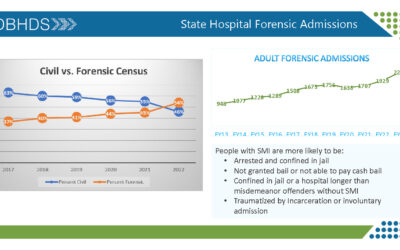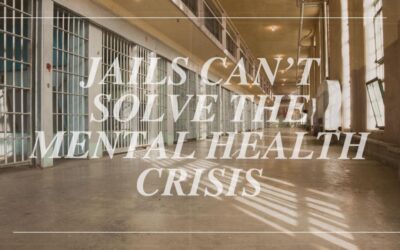Minority Mental Health: Important Every Month and Every Day
By Kimya N. Dennis
July is Minority Mental Health Month (http://www.mentalhealthamerica.net/conditions/minority-mental-health and https://www.nami.org/Get-Involved/Awareness-Events/Minority-Mental-Health-Awareness-Month/Learn-About-Minority-Mental-Health-Month). This month is devoted to discussing mental and emotional health among racial and ethnic groups whose mental health, and physical health, are often silenced, underserved, and misunderstood within communities, societies and cultures. This includes school systems which is why it is beneficial for Virginia and New York to now require mental health education in schools (https://www.wavy.com/news/virginia/new-york-virginia-become-first-to-require-mental-health-education-in-schools/1281138805). In Virginia, health education will be part of the updated Standards of Learning for 9th and 10th graders.
This has a tremendous affect for mental health education in school systems, cultures and societies. While this affect impacts everyone, there is substantial impact for racial and ethnic communities with less access to health discussions, health education and health services. Such limited access is evident in families, neighborhoods, schools and cities in Virginia and across the U.S.
Therefore, Minority Mental Health Month is important. But mental health, and minority mental health, it is not only important for one month. It is important every month and every day. Here are ways this can be established and developed.
One component of mental health is learning and respecting various races, ethnicities and cultures. Learning and respect need to be at every stage for health-based or medical students and health-based or medical professionals. This is beyond occasional workshops and training throughout careers, this is a necessary rearranging of health-based and medical programs at the college and graduate level. Every required course and every field training should require cultural knowledge and proven ability to apply cultural knowledge.
This is not easy. More senior health professionals and senior medical professionals will have to develop or increase their cultural consciousness and competence (https://www.ncbi.nlm.nih.gov/pmc/articles/PMC2824588/). This is instrumental in challenging the falsehood that mental health and physical health are completely objective, culturally neutral and applicable to every individual and every group in the same way. As it pertains to mental health, DSM has, thankfully, not included “homosexuality” for years. But DSM is still presented as being universally applicable across races, ethnicities and cultures as though thoughts, beliefs and behaviors are not partially learned by group identities and group surroundings.
Cultural consciousness requires all health-and-medical professionals to understand cultural variances in verbal and nonverbal communication. Without cultural consciousness, there remains tension between patients/consumers of health services and health professionals. Tensions include patients/consumers feeling misunderstood, condescended and given advice that is not universally applicable (examples: Body Mass Index was not designed for different body types; many unhealthy food items are a result of lower socioeconomic food deserts; some unhealthy foods result from Trans-Atlantic Slavery, misplacement of various ethnic and cultural groups, mistreatment and isolation of Native Americans/Alaskan Natives; and “nutrition” is culturally variant).
In addition to understanding communication, mental health and physical health advocates and professionals should be trained in how to handle varying circumstances. If a health advocate or professional does not know how to respond to a person’s comment or question, rather than ignoring or feeling threatened, the health advocate or professional needs to pause and think about what was said. For instance, when discussing mental health with people in cultures that have an even greater tendency to silence and demonize mental health conditions, health professionals need to know how to respond to questions such as “will I still go to heaven” and, if the professional does not know how to answer, there needs to be someone to whom the patient/consumer can be referred. Another example is a patient/consumer who is unfamiliar with the lasting side effects of medications and health conditions. If a patient/consumer asks a health professional whether there will be negative effects on sexuality and sexual intercourse, the health professional should not be taken aback or offended, instead, either answer the question or direct the patient/consumer to a health professional who can answer. It is important to remember that health professionals are being asked to reach underserved and underserviced racial, ethnic and cultural communities. It is a disservice to communities when health professionals do nothing but make patients/consumers feel even more silenced and dismissed.
Lastly, there should be more community outreach and community advocacy. This needs to go beyond having health tables at community events. There is a need for open, honest, nonjudgmental community programs that contain discussions with community members and health practitioners. Rather than having a formal environment such as people sitting on a panel or behind a podium, health practitioners need to walk around and receive community members’ questions, concerns, critiques; and ask community members for opinions on how health practitioners can better reach communities. This community outreach is more possible if health organizations collect data and utilize data on the demographics of people who attend the organization’s events, who utilize the organization’s health services, and demographics of the health organization’s employees. Demographic data is the only way to assess the organization’s racial, ethnic and cultural representation and improve organization’s representation and outreach across racial, ethnic and cultural communities. This is necessary for health organizations to reach racial, ethnic and cultural communities. Demographic representation and community outreach are furthered when health professionals write op-ed and other public writings to reach communities and use non-medical terminology.
None of this is quick and easy. It requires reshaping and retraining health at all levels and all stages. We can do this together. Because, as previously stated, minority mental health is every month and every day.
Biography for our MHAV Volunteer: Kimya N. Dennis’s multidisciplinary community advocacy, teaching, research and consulting address mental health, suicide and suicidal self-harm, criminal justice system, sexual health and reproductive health. To learn more and contact Dr. Dennis, check out her website at www.kimyandennis.com or email Dr. Dennis at kimya@kimyandennis.com.
We wish to thank Dr. Dennis for her contribution to our July blog post and her advocacy work!



